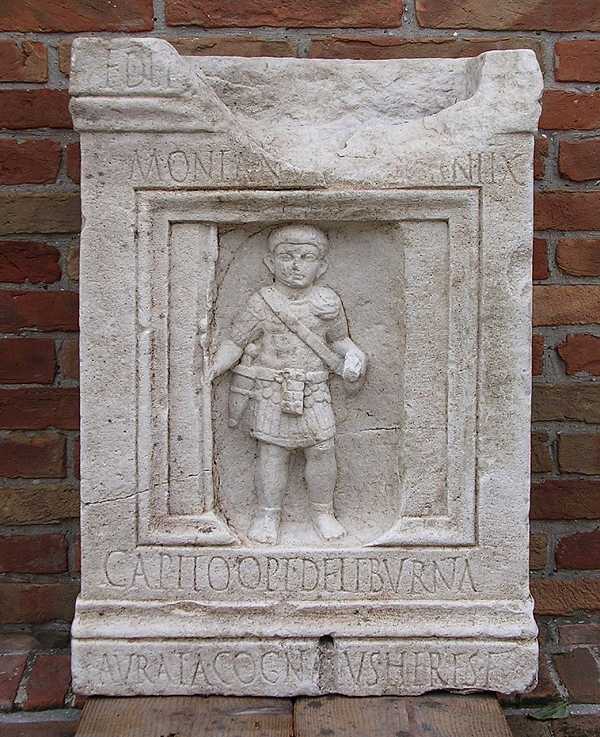The armour-clad, weapon-bearing soldier was carved on a funeral stone, or stele, in a waterlogged necropolis at Classe ('Classis' in Latin means Fleet), the now silted-up Ravenna port area where Rome's Adriatic fleet was stationed.
Previous finds at the site have only shown people in civilian garb (toga).
An inscription on the soldier's funeral slab says he was an officer (optio) on a small, fast oar-powered ship (liburna) used to catch pirates.
Although the stele is small -about one metre (yard) long- the detail of the carving is intricate.
The soldier has the bowl haircut and delicate, child-like features typical of carvings from the 1st-century AD Julio-Claudian era.

He wears anatomically shaped body
armour with shoulder strips and a leather-fringed military skirt, above the
light but tough military sandals called "caligae". He is carrying a heavy
javelin (pilum) and has a short stabbing sword called "gladius" on his
decorated belt.
Over his armour there is a band which could be a military decoration.
Part of the inscription is missing, but we can read the soldier's name
Mon(?)us (?) Capito -may be Moniatus or Monietus Capito-,
the name of his ship -called 'Aurata' that means Golden- and the name of
the man who put up (and paid) the stele, probably a fellow soldier, named
Cocneus.
The stele was found in three metres of water by divers helping archaeologists
trace a large tunnel from the late Imperial times. The stone had been taken from
the burial ground and used to prop up part of the tunnel that had collapsed.
The find would have pride of place in a Museum of Archaeology being set up at
Classe.